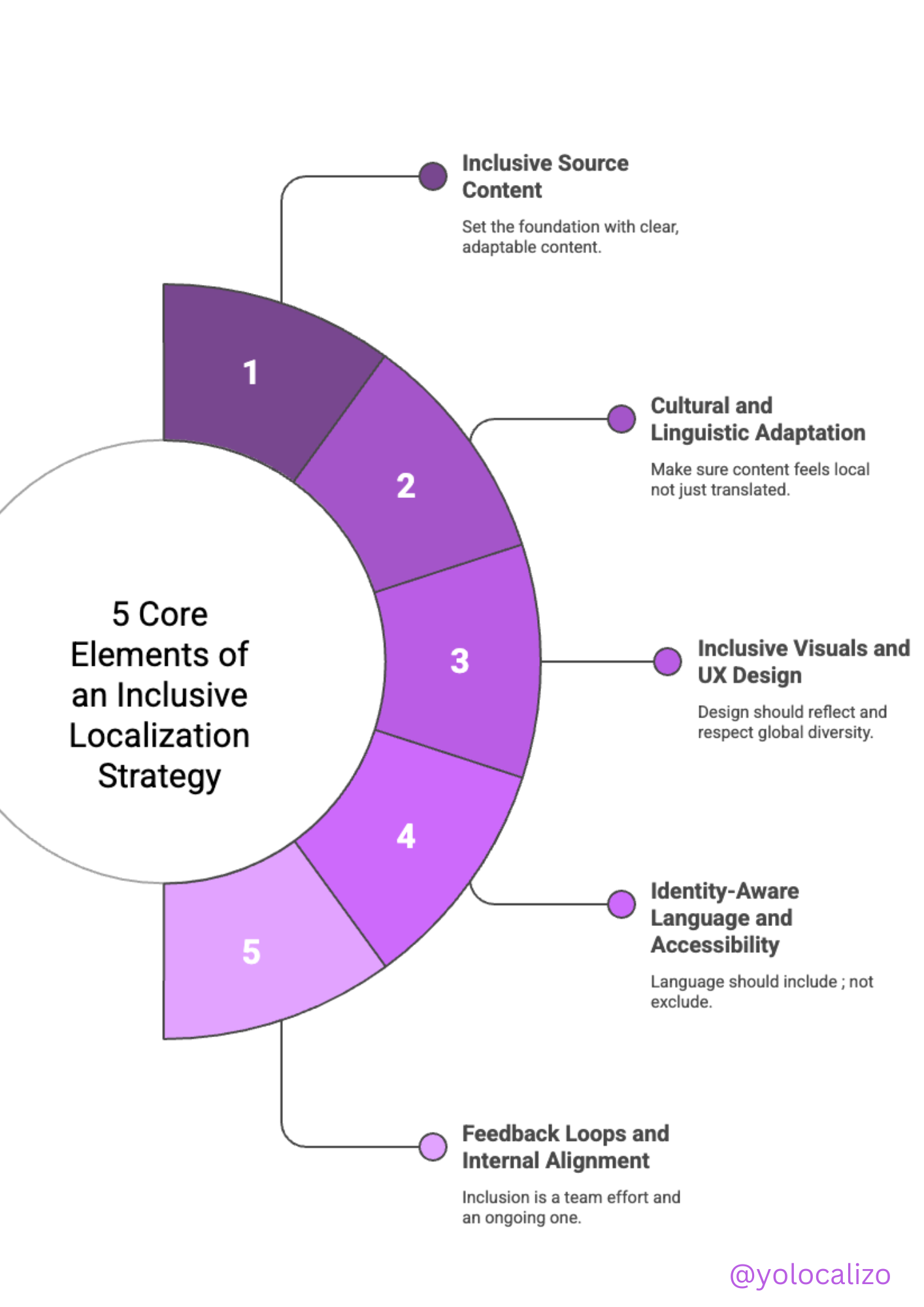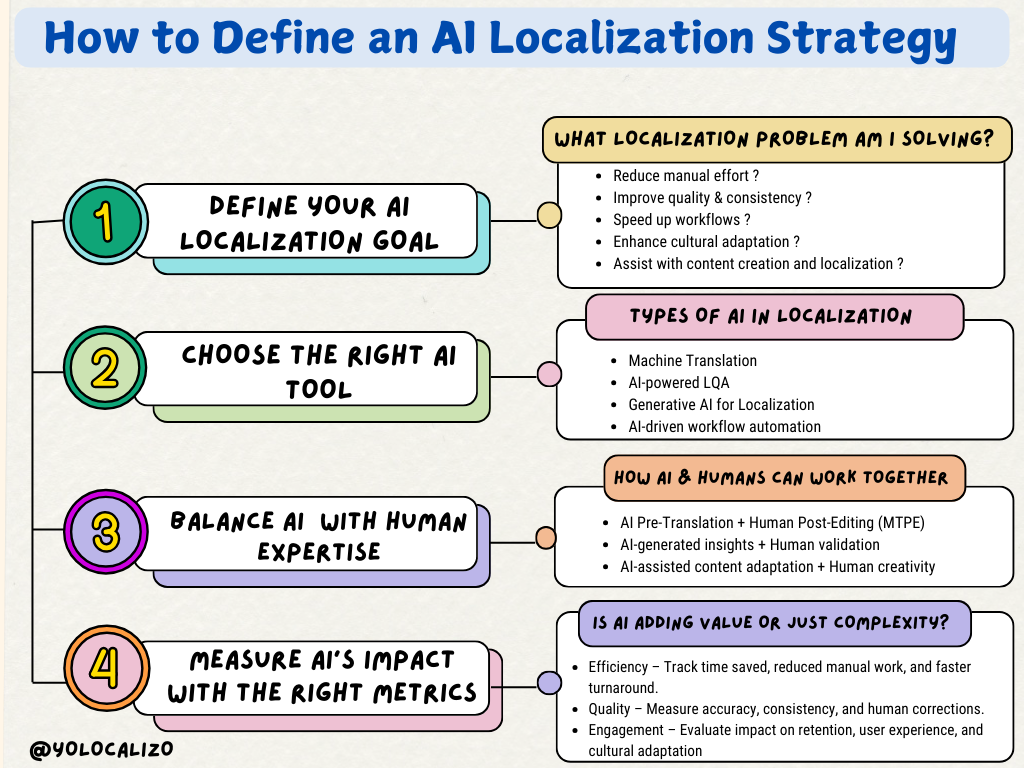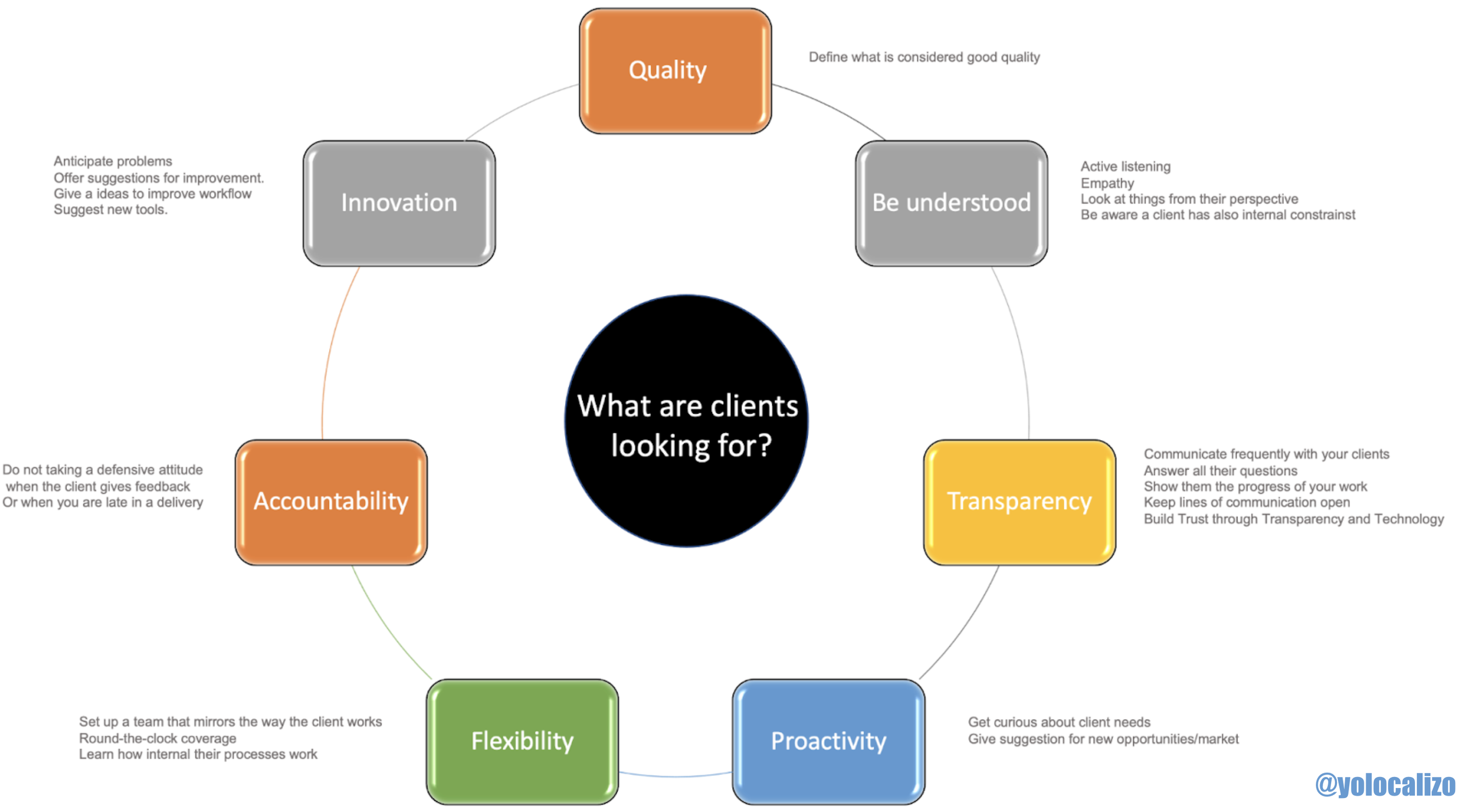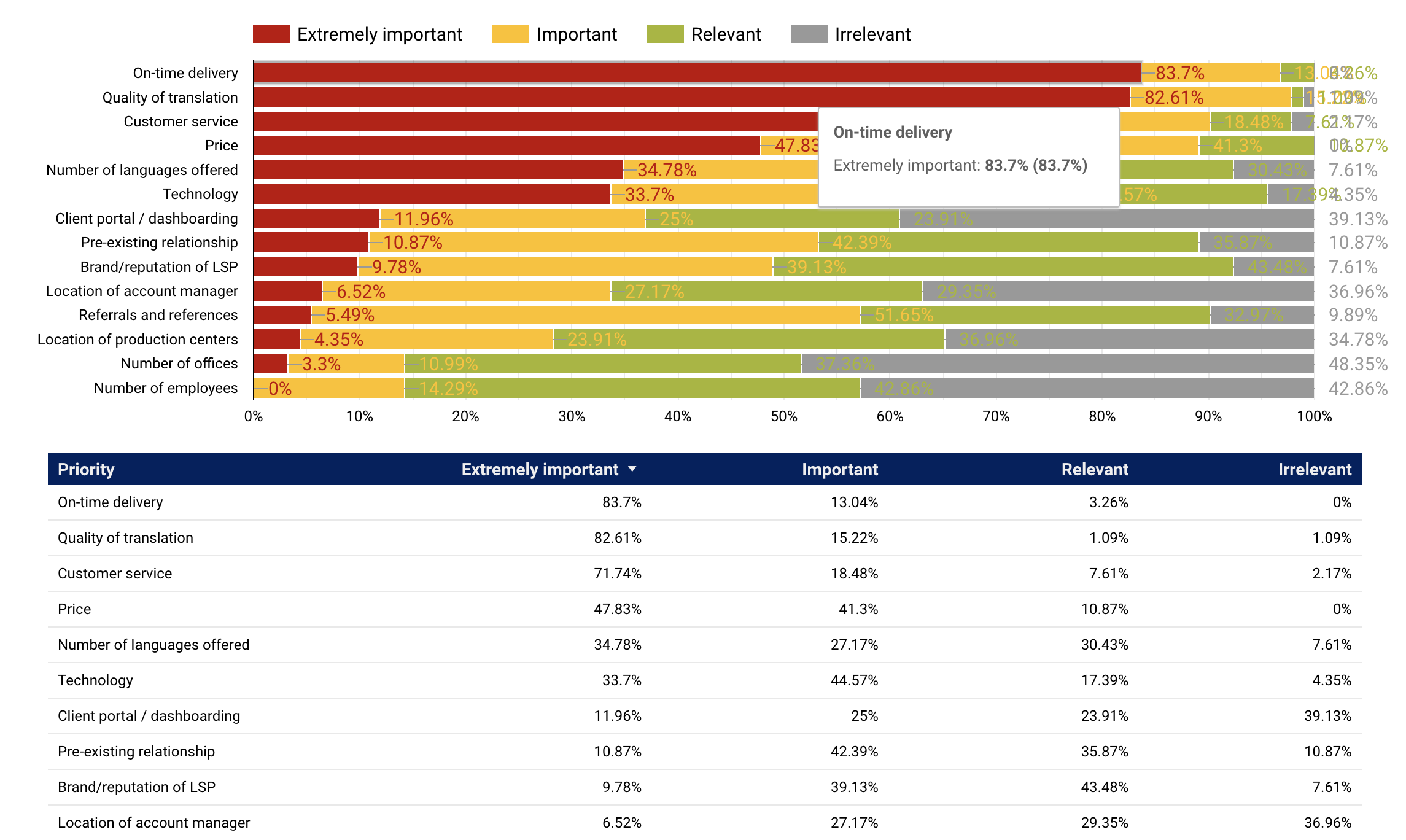7 areas that a Localization Service Buyer considers important when working with a Language Provider
Last week I had the opportunity to give a presentation at the ELIA conference. It was the first time I participated. Until then, I had not had the chance to participate either as a participant or speaker.
I liked this event because it focused on the role of the PM.
A Localization plays a vital role. It is the glue bringing together all the pieces of our fragmented Localization industry.
I found this event interesting because it focused on the Evolution and Revolution of Project Management. And the role of PM has changed a lot. Gone are the days when a PM was little more than a file pusher moving translation files around. Now clients demand more from them, much, much more. The PM role has moved from a more transactional executor role to a consultant.
This is something that Veronica Garcia in her presentation Join the Revolution! How to become a next-generation PM gave us an excellent perspective on this evolution of the PM role.
Veronica works at one of the largest LSPs in the industry and leads a team that encompasses 50 PMs. So she knows a thing or two about managing PMs and customers! It was great to hear Veronica's insights on how the PM role has evolved.
The great thing about presenting after Veronica is that it was the perfect mix!
She explained the evolution of the PM role from the vendor side.
In contrast, my presentation focused on what we as buyers value from a language provider to have a successful relationship.
As a continuation of my presentation, I thought it would be a good idea to write a post summarizing some of the attributes that, from my point of view as a Localization Service Provider, it is worth paying attention to establish such a healthy relationship.
Here is a summary of 7 areas to take the relationship between LSP and LSB from transactional to true partnership
Quality
Quality is the number 1 requirement clients look for in a relationship with a partner.
Price is often thought to be the most important factor in the LSP-LSB relationship. And while it is true that it is a factor to consider. It is no less true that it is not the most important factor.
In this report from the insights firm Nimdzi, we can see a research where hundreds of buyers were asked about different important factors when buying language services.
14 different parameters were analyzed about what a buyer values when outsourcing. And the price is not in the top 3
Source: Nimdzi Insights
While it is true that price is important when it comes to establishing relationships in the localization industry, it is not the main factor
Source: Nimdzi Insights
Be understood
An LSB wants to be understood. Therefore, a good habit for the LSP is to focus on what the LSB has to say, active listening, empathy. Look at things from their perspective, try to feel what they feel, and understand what they need.
Empathy and being understood is something clients are looking for. Another important aspect for an LSP to understand is that the customer also faces his own internal constraints on many occasions.
A buyer has many internal stakeholders to respond to and satisfy.
Transparency
Be transparent through technology is another good habit to build a meaningful relationship .
Trust is essential in any business relationship
But how can you build this trust? Transparency is the answer.
Communicate with the clients, answer all their questions, show the progress of the work, and involve them in the review process.
Transparency is all about keeping lines of communication open
Proactivity
Proactivity is something very important that clients want, and from my point of view, the first step of proactivity is to get curious about client needs.
I think an LSP can bring value to a client's organization by investing more time in knowing the needs of the client than in explaining the virtues of LSP.
Proactivity is all about doing your homework; get to know your client as much as possible. Make an effort to ask relevant questions, Get genuinely curious about their goals and needs.
You can also ask them if they can share or describe their team goals (if it's not confidential ! ) And then take time to reflect on how you as an LSP might support your client goals.
Another area where the client can show proactivity is in everything that has to do with giving suggestions for new opportunities, for new markets.
Flexibility and scalability
I believe that the vendors most loved by a customer are those who set up a team that mirrors the way the client works, with people in locations ensuring round-the-clock coverage, ensuring they accommodate project managers in the same time zones as we are.
Vendors that make an effort to learn how our internal processes work, what tools and infrastructure the company is using, what opportunities the company has in terms of technology development
Accountability
About Accountability, this is one of the areas that I personally value highly. Accountability in this context is not taking a defensive attitude when the client gives feedback or when there is a mistake. More often than I would like, I have found myself in situations where some localised content is too literal, and many translators take that feedback personal, as if it were an attack on them.
On these occasions, the disagreement escalates to multiple emails to a thread where the client says that the tone is not right, that the content is not engaging for the end-user. At the same time, the vendor is inflexible that the translation is grammatically correct. Here I want to point out that sometimes, no matter how linguistically correct the translation is, there is no guarantee that it is the translation that the client needs. When the client is expecting more creative, engaging content, a flat, literal translation can be an obstacle to solidify the relationship.
Vendors who are not defensive and curious to understand why their translation was not liked are in a good position to solidify the relationship with the client.
Innovation
Innovation is another attribute valued by clients.
The vendors are in an unbeatable situation to suggest new ways of working, new processes, new tools ... through the hands of their Engineers, Project Managers and Translators go hundreds, thousands of files every day, and they are exposed to many different situations.
For this reason, communicating to the vendor that we would like to establish a relationship in which innovation is important is a good idea.
Some clients may be more familiar than others with the ins and outs needed to launch a product worldwide.
And, likely, some problem that the client is trying to solve has already been seen in the past by LSPs, and for this reason, an LSP should not be afraid to educate its client and give suggestions on how to get better. A great way to add value to the relationship and move it to a more collaborative way is being proactive.
Anticipate problems and offer suggestions for improvement. Give an idea to improve workflow, suggest new tools.
Summary
We are in a unique moment.
The COVID pandemic we are immersed in has given an enormous boost to both the digitization of content and access to the online world for millions and millions of people. This boost means a huge opportunity when it comes to localizing content. Thanks to Globalization activities, we connect localized content and customers in local markets naturally. And to make that connection efficiently, it is good to understand what buyers value to create a healthy relationship.
I hope the list above gives some hints on how to build this healthy relationship!
@yolocalizo


















Localizability has always been a challenge small issues in source content often lead to big problems later in translation. In this post, I explore how AI is giving localization teams a powerful new way to improve source quality, reduce friction, and create better content for every market right from the start.